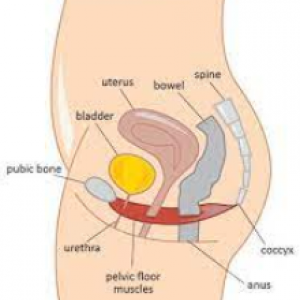Pelvic Floor
By Louisa Hockley
The pelvic floor is a group of muscles that stretch from the pubic bone to the very end of the coccyx as well as from side to side. The muscles that make up the pelvic floor are there to keep you dry during exercise, whilst moving, and even when coughing or sneezing. They provide support to the bladder, womb (in women), and the bowel, by helping you fully empty the bladder and bowel when you go to the toilet. Additionally, the pelvic floor muscles contribute to a good sex life!
When our pelvic floor muscles are not providing enough support, we can experience issues such as leaking and incontinence, especially when moving and exercising. We call issues such as this pelvic floor dysfunction (PFD). Although both men and women have pelvic floors, men tend not to experience as many issues as they do not have a vagina and they don’t experience menstrual cycles, childbirth or menopause. These particular life events for women can sometimes trigger PFD and some women can experience leaking urine, bladder urges and vaginal pain. However, it is important to note that any female of any age can experience pelvic floor issues. PFD can be a massive barrier to participation in exercise and sport for women and girls, especially during exercises that include jumping and running where women are more likely to experience leaking.

So how do we know when it’s not working quite so well? Some women experience leaking when exercising (particularly in running and jumping exercises), struggle to keep tampons in, experience pain during sex and may have a dragging sensation in their vagina. These are all signs that you may be experiencing some problems with your pelvic floor and it is important to seek help from a womens health professional. Just like any other muscle in our body, the pelvic floor muscles need training to strengthen and help prevent PFD. Pelvic floor exercises should be done daily to help strengthen the muscles and prevent any issues arising.
PFD is not taboo, many people experience issues with their pelvic floor and it is important to seek help and guidance so it does not prevent you from participating in exercise and sport.
This is a really useful set of videos from The Well HQ, guiding you through your pelvic floor exercises, to ensure they are done correctly: https://www.thewell-hq.com/pelvic-floor/pelvic-floor-series/
The NHS Squeezy app, designed by physiotherapists also offers great pelvic floor exercises and programmes to follow: https://squeezyapp.com/


About the author
I am a Level 3 qualified Personal Trainer at Halo Gym and have an MSc in Sports Performance and a BSc in Sports Science. I have a keen interest in female health and take a holistic approach to women in sport, from the general public to elite female athletes. My goal is to educate and empower women, and to help them make gains in and outside of the gym.


